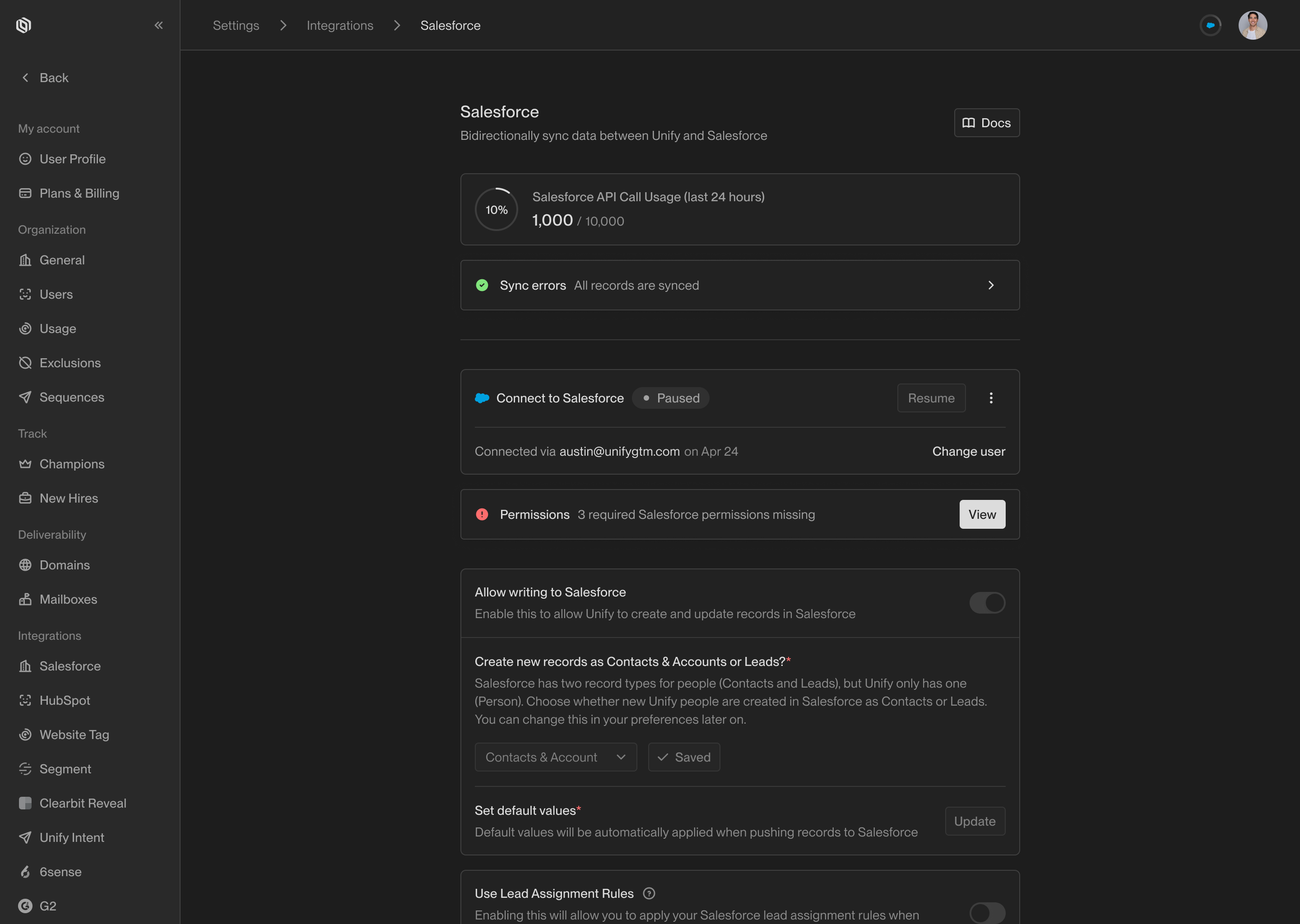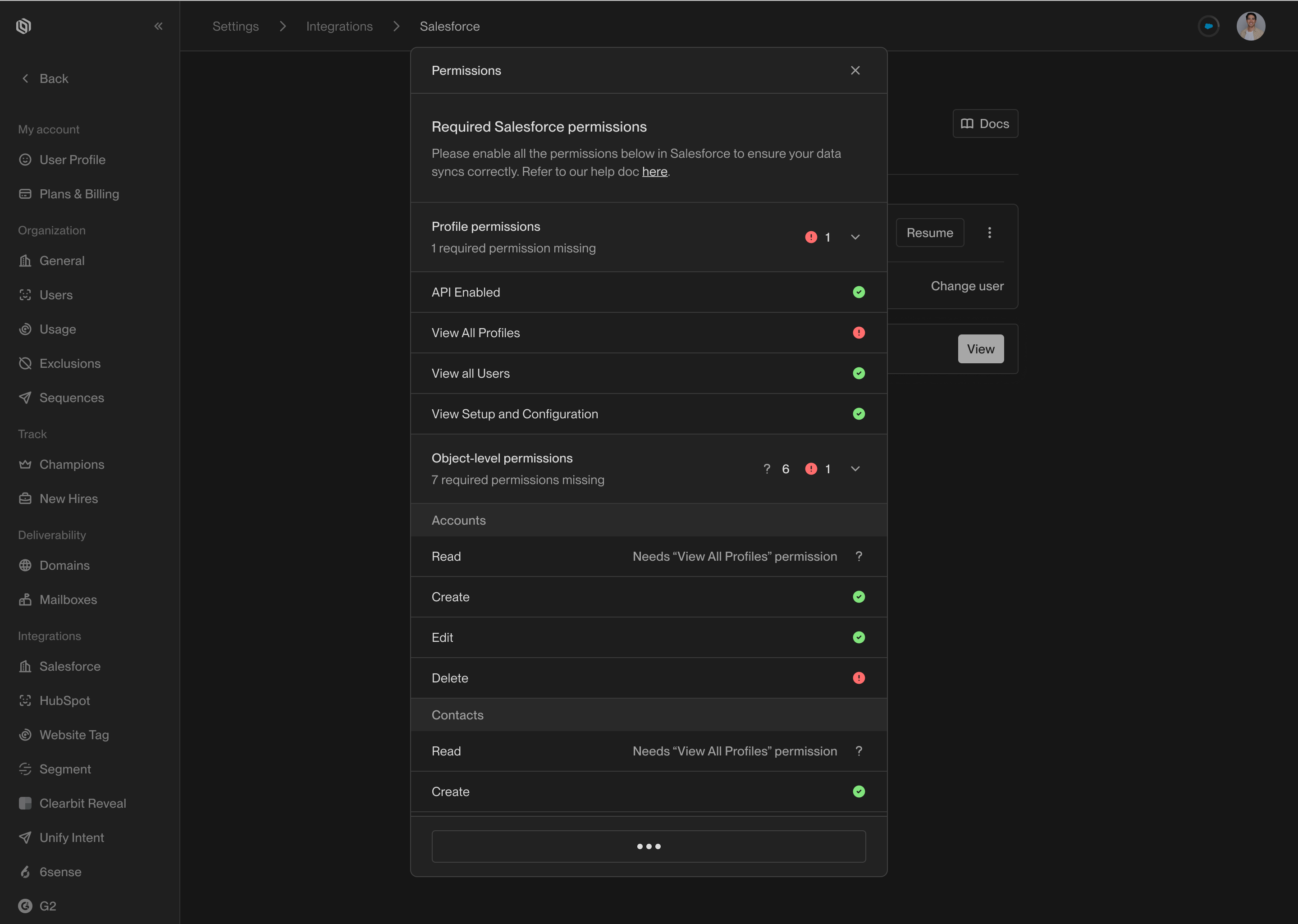Overview
The permissions that Unify requires fall into two categories:- System Permissions: These are permissions that apply to the entire Salesforce instance and are required for Unify to function properly.
- Object Permissions: These are permissions that apply to specific objects (e.g., Account, Contact, etc.) and are required for Unify to read and write data.
Required Permissions
Access can be restricted as desired for sensitive records or fields that you
do not want Unify to access. However, Unify needs access to any records or
fields that you want to use for exclusions.For example, to prevent Unify from engaging with current customers, Unify will
require access to the records that indicate current customers to evaluate the
exclusion rule.
- System Permissions
- Object Permissions
| Permission | Reason |
|---|---|
| API Enabled | Allows Unify to communicate with Salesforce via the API |
| View All Users | Enables Unify to link Salesforce users to Unify users |
| View Setup and Configuration | Enables Unify to provide details about missing permissions |
| Edit Tasks | Enables Unify to create and update tasks and email messages |
Setup
Assign required permissions
Depending on whether you are using profiles or permission sets, the steps to assign the required permissions will differ slightly. Follow the instructions below based on your setup.- Profiles
- Permission Sets
If you’re using a Profile to manage permissions, follow these steps:
- Navigate to the Setup page in Salesforce by clicking the gear icon in the top-right corner.
- Go to Users > Profiles.
- Choose the Profile assigned to your integration user.
- Click Edit.
-
In the Administrative Permissions section, enable the following
options:
- API Enabled
- View All Users
- View Setup and Configuration
-
In the General User Permissions section, enable the following
options:
- Access Activities
-
In the Standard Object Permissions section, enable the following
options for each object:
- Account: Read, Create, Edit
- Contact: Read, Create, Edit
- Lead: Read, Create, Edit
- Opportunity: Read
- Email Message: Read, Create, Edit
- Click Save.

The permissions widget will indicate if permissions are missing.

The specific missing permissions are displayed in the details view.
Enable Enhanced Emails
To ensure Unify can write emails to Salesforce, the Enhanced Email feature must be enabled. This allows Unify to write sent emails using the Email Message object. In most orgs, Enhanced Email is enabled by default. If you don’t see the Email Message object, review the following guide to enable it.Set Up Enhanced Email
Salesforce support article explaining how to enable Enhanced Email.